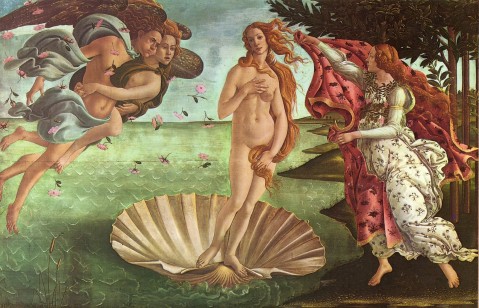Indeed, love songs existed before Marvin Gaye and Jay-Z.
Et la mer et l'amour ont l'amer pour partage,
Et la mer est amère, et l'amour est amer,
L'on s'abîme en l'amour aussi bien qu'en la mer,
Car la mer et l'amour ne sont point sans orage.
Celui qui craint les eaux, qu'il demeure au rivage,
Celui qui craint les maux qu'on souffre pour aimer,
Qu'il ne se laisse pas à l'amour enflammer,
Et tous deux ils seront sans hasard de naufrage.
La mère de l'amour eut la mer pour berceau,
Le feu sort de l'amour, sa mère sort de l'eau
Mais l'eau contre ce feu ne peut fournir des armes.
Si l'eau pouvait éteindre un brasier amoureux,
Ton amour qui me brûle est si fort douloureux,
Que j'eusse éteint son feu de la mer de mes larmes.
- Pierre De Marbeuf

Poem review:
Yes, love songs existed before Marvin Gaye and Jay-Z. We used to call them poems.
Since the 12th century, the destructive passion represents a recurring theme in literature. Since the tale of Tristan and Iseult, passionate love inspires authors and help them to darken the innumerable pages of collections of poetry. A narrow bridge is often made between love and the ocean, two universes in the same time compared and contrasted, both full of pleasures and distress.
Throughout his untitled poem from 1628 which cleverly starts with “Et la mer et l'amour” (And the sea and love), Pierre De Marboeuf plays with words using both visual and sound aspects like subtle paronomasis (“mer/amer/amour”), alliteration on the redundant “m”-sound as well as a range of echoes of meanings.
Drawing parallels between “Mer/La mère” (Sea/Mother), “Eaux/Maux” (Waters/Pains), “Armes/ Larmes” (Weapons/Tears), the author acts as a prodigy of words. He evokes brilliantly the common points between an unfortunate love and a rolling sea, their common dangers (“L'on s'abîme en l'amour aussi bien qu'en la mer”) and their both high shipwreck risk (“Et tous deux ils seront sans hasard de naufrage”).
Becoming a Baroque virtuoso, De Marboeuf also highlights the differences between Love and the Ocean, thanks to mythological allusions referring to “La mère de l'amour” (Mother of Love), known as the Greek Goddess of Love Aphrodite or Venus, her Roman equivalent. The image of Love symbolized by the allusion of fire (“Le feu sort de l'amour”/ Fire comes out from Love) struggles against the image of Ocean, symbolized by the allusion of water (“Sa mère sort de l'eau”/ Her mother comes out from water). The two distinct universes are here described as two antagonistic elements and are played off against each other especially in the last verse of the poem.
Indeed, love songs existed before Marvin Gaye and Jay-Z.



